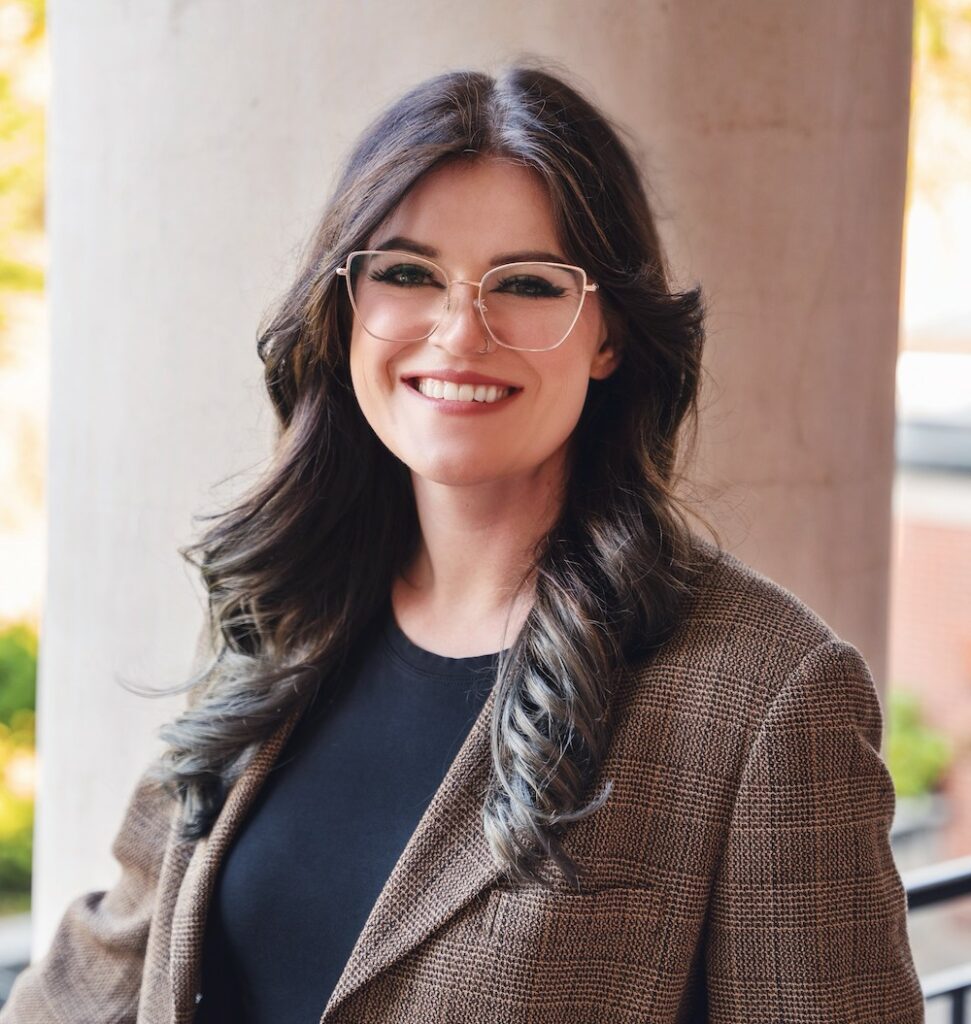Natalie Van Gelder wants to teach writing, but not necessarily to people who want to write.
The first-year MFA student in creative nonfiction recognizes writing as a tool for discovery–particularly as an exploration of self-discovery, and especially when it comes to better understanding neurodivergence.
Natalie’s writing contributes to the work of medical humanities and narrative medicine, both emerging fields that explore the humanities as tools for increasing empathy in medicine. Narrative medicine likewise recognizes the all-too-common disconnect between practitioners and their clients, and aims to incorporate storytelling into the practitioner-patient relationship. That might look like practitioners spending more time with patients, or asking them to write about family histories before asking about symptoms, knowing that through a thorough understanding of a patients’ background, more helpful information about their current conditions may emerge.
After graduating from California State University Bakersfield in 2008 with a degree in literature, Natalie worked in technical publications at NASA. She’s always loved science (and says if she wasn’t a writer she would be an entomologist) but it wasn’t until her MA program in creative writing at California State University Northridge that Natalie realized writing could be a tool of discovery and could help her better understand her own diagnoses.
Her graduate thesis “Desert Anxieties” was a hybrid work that explored her own neurodivergence. The paper was written in IEEE, a format commonly used for scientific publications. By using this style typically reserved for detached scientific observation, Natalie put herself as the work’s case study, interrogating the distanced treatment she typically received from doctors and psychiatrists.
Now, Natalie’s work continues to explore trauma studies and disability, especially neurodivergence as it presents as ADHD and autism. As a neurodivergent writer, Natalie is well aware of the power of writing as a way of interacting and making sense of the world. It’s a powerful tool that she wants to teach to people who may not be familiar with the practice.

Currently, Natalie teaches WR 121, an introductory composition course that is typically populated by mostly STEM majors–and she loves it. While still only in the first term of her two-year program, Natalie hopes to work in the medical field after graduating, teaching writing to mental health practitioners and therapists, giving them resources to pass on to their clients about the power of writing as a tool for self-discovery.
Tune in Sunday 12/03 to hear Natalie talk about all this and more on KBVR 88.7, or catch the episode later on our podcast.











